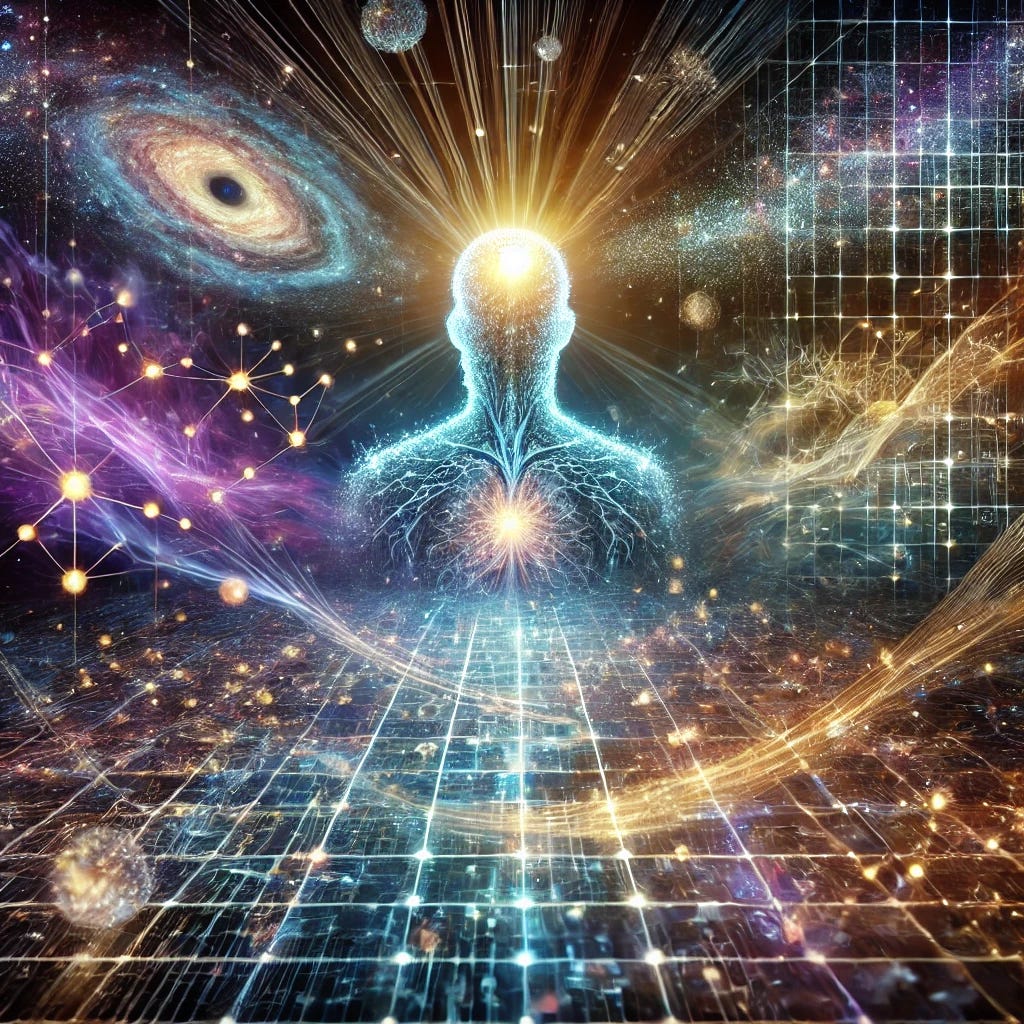Life, Observation, and Reality
Exploring the Intersections of Quantum Biology, Panpsychism, and Simulation Theory
The nature of reality has perplexed philosophers and physicists for centuries. Recent advances in quantum mechanics have reignited questions about the relationship between observation, consciousness, and existence. Does the universe require observers to "collapse" its quantum possibilities into a defined state? Is life itself the critical observer in this equation, and if so, what does that mean for the nature of reality?
This article examines these profound questions through the lenses of quantum biology, panpsychism, and simulation theory, exploring whether life is not merely a passive participant in the universe but an active shaper of its structure.
1. Quantum Biology: Life as a Quantum Observer
Quantum biology explores how quantum phenomena—like superposition, entanglement, and tunneling—are integral to life’s processes. These findings suggest that life interacts with quantum systems in ways that might extend beyond mere biological function.
Key Evidence from Quantum Biology
Photosynthesis: Plants use quantum coherence to transfer energy efficiently within chlorophyll molecules, suggesting life leverages quantum mechanics for survival.
Bird Navigation: Certain bird species, such as European robins, rely on entangled electrons in their eyes to sense Earth’s magnetic field, highlighting quantum effects in navigation.
Smell and Quantum Tunneling: Research indicates that olfaction involves electrons tunneling between molecules, defying classical explanations.
Consciousness and Microtubules: The Orch-OR theory by Penrose and Hameroff posits that consciousness arises from quantum processes within microtubules in brain cells.
Implications for Life’s Role in Observation
If life is fundamentally intertwined with quantum mechanics, it may also serve as a natural observer, collapsing wave functions through biological interaction. This suggests:
Life doesn’t just exist within reality—it actively participates in shaping it.
Observation by living organisms, even at a microbial level, might play a role in defining the quantum states of the universe.
2. Panpsychism: Consciousness Embedded in Matter
Panpsychism proposes that consciousness is a fundamental property of the universe, present at all levels of existence—from subatomic particles to galaxies. This contrasts with the traditional view that consciousness emerges only in complex brains.
Core Variations of Panpsychism
Micropsychism: Even elementary particles possess rudimentary consciousness.
Cosmopsychism: The universe itself is a conscious entity, and individual minds are expressions of this larger cosmic mind.
Integrated Information Theory (IIT): Consciousness correlates with the complexity of integrated information in a system, which could exist in brains, ecosystems, or even quantum systems.
Quantum Mechanics Meets Panpsychism
In a panpsychist framework, observation in the quantum sense doesn’t require complex consciousness—particles or systems themselves might "observe" each other. This leads to profound possibilities:
Reality is relational, not independent. The properties of matter exist only in relation to their interactions with other matter.
Life might not be a passive observer, but an active participant in shaping quantum states, with its own consciousness contributing to the universe’s self-awareness.
3. Simulation Theory: Is Reality a Computed Construct?
Simulation theory suggests that our universe could be a sophisticated computational simulation, created by an advanced intelligence or process. The quantum behavior of particles—where superpositions collapse into definite states only upon observation—bears striking similarities to how simulations render environments dynamically based on the player's actions.
Quantum Mechanics and Simulation
Wave Function Collapse as Rendering: Just as a video game renders only what a player sees, quantum systems "resolve" into definite states upon observation.
The Pixelation of Space-Time: If the universe has a smallest measurable unit (e.g., Planck length), it could suggest reality operates on a discrete computational grid.
Quantum Information as Code: The holographic principle and theories like Wheeler’s "It from Bit" posit that the universe is fundamentally informational in nature, akin to a vast computation.
Life’s Role in a Simulated Reality
If reality is a simulation, then observers (such as living beings) might play a critical role in "rendering" existence.
Consciousness collapsing wave functions could be the simulation's mechanism for generating a coherent universe, meaning life actively participates in creating the simulation’s reality.
Synthesis: Is Life the Universe Observing Itself?
The overlap of these perspectives reveals profound insights into the relationship between life, observation, and reality:
Life as an Observer
Quantum Biology: Life interacts directly with quantum states, making it an essential part of the universe's structure.
Panpsychism: If consciousness is fundamental, life doesn’t just observe reality; it actively participates in shaping it.
Simulation Theory: In a computed universe, observers render reality, suggesting life’s purpose may be to define and sustain existence itself.
Reality as Relational and Participatory
Observation doesn’t just reveal reality; it helps create it. Whether through quantum mechanics, universal consciousness, or simulated processes, life appears to play an active role in shaping the cosmos.
The Philosophical Implications
Is Reality Incomplete Without Life?
If life is required to collapse quantum states or render simulated environments, then reality might be incomplete without observers. This challenges the classical idea that the universe exists independently of its contents.Is Life the Universe’s Self-Awareness?
If consciousness exists at every level (panpsychism) or emerges through quantum complexity (quantum biology), then life might be the universe’s way of observing itself—turning the cosmos into an observer-participant system.Are We Creators of Reality?
If simulation theory holds, then we’re both participants and creators, rendering the universe with every act of observation. This makes life a co-author of existence, rather than a passive element.
Conclusion: A Universe Shaped by Life
Life may be more than a product of the universe—it may be an intrinsic component of its design. Whether through quantum biology, panpsychism, or simulation theory, one thing becomes clear: life is not just an observer but an active participant in shaping reality.
This reframes fundamental questions about existence:
Is life the universe’s means of knowing itself?
Is consciousness the fabric of reality?
Does the universe require interaction to fully exist?
While these questions remain unanswered, exploring them brings us closer to understanding the profound and mysterious connection between life, consciousness, and the cosmos. The universe, it seems, is not just a stage upon which life plays—it may be an active collaborator in the creation of reality itself.


